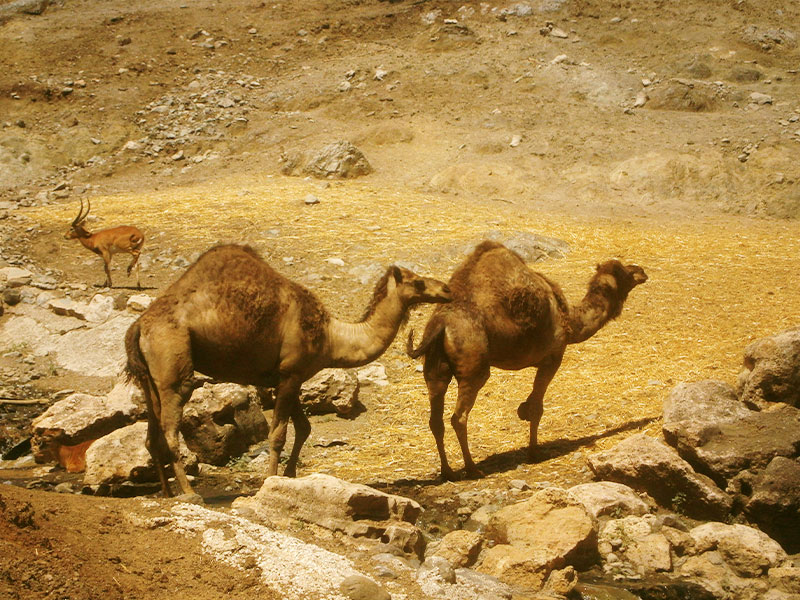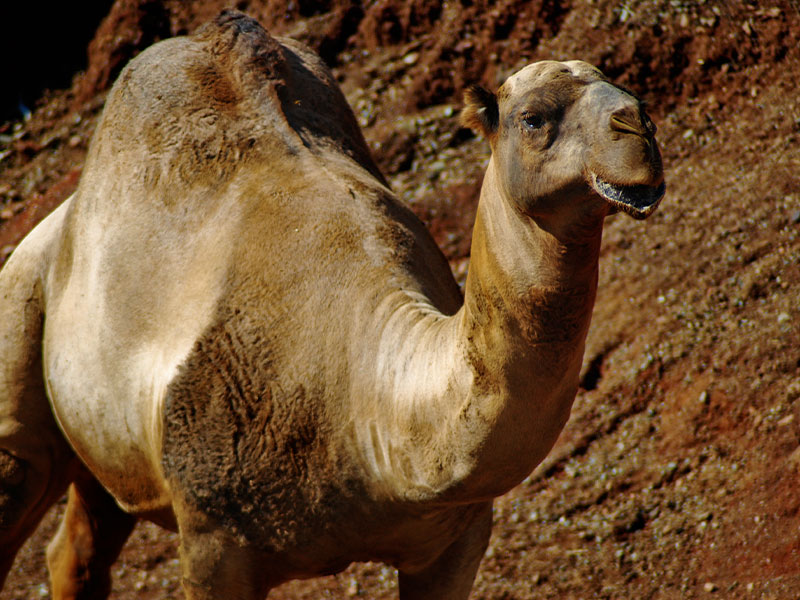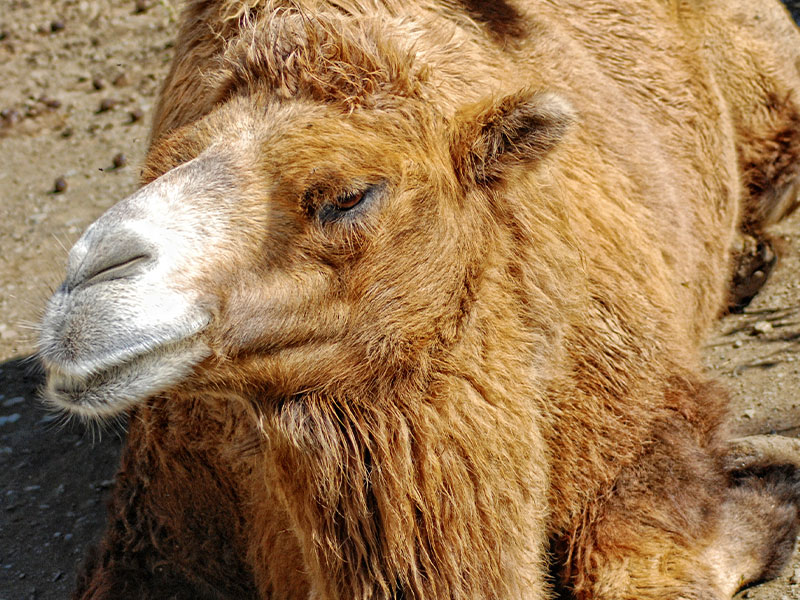


Dromedary















Dromedaries inhabit the arid regions of the Middle East and northern India, and parts of Africa, in particular the Sahara Desert.
It has a single hump that is composed of fat and fibrous tissue that acts as food storage in times of need. The size of the hump varies with the dromedary's nutritional status. The dromedary has remarkable adaptations for its desert lifestyle: its eyes are protected from sand and dust by a double row of eyelashes, it has the ability to close its nostrils to prevent sand from entering, and it can conserve water thanks to its ability to fluctuate its body temperature throughout the day.
It usually forms groups of 2 to 20 individuals consisting of one male and one to several females, adolescents and young. The male prevents contact between females and stray males. The male is the dominant member of the family group and leads the family from behind, while the females take turns leading. Dromedaries tend to travel walking in single file.
Breeding takes place in winter, the female giving birth to a single calf after 15 months of gestation.
They have not existed in the wild for 2,000 years.